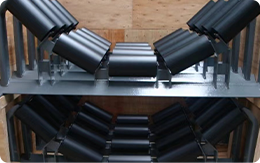 Afrikaans
Afrikaans  Albanian
Albanian  Amharic
Amharic  Arabic
Arabic  Armenian
Armenian  Azerbaijani
Azerbaijani  Basque
Basque  Belarusian
Belarusian  Bengali
Bengali  Bosnian
Bosnian  Bulgarian
Bulgarian  Catalan
Catalan  Cebuano
Cebuano  Corsican
Corsican  Croatian
Croatian  Czech
Czech  Danish
Danish  Dutch
Dutch  English
English  Esperanto
Esperanto  Estonian
Estonian  Finnish
Finnish  French
French  Frisian
Frisian  Galician
Galician  Georgian
Georgian  German
German  Greek
Greek  Gujarati
Gujarati  Haitian Creole
Haitian Creole  hausa
hausa  hawaiian
hawaiian  Hebrew
Hebrew  Hindi
Hindi  Miao
Miao  Hungarian
Hungarian  Icelandic
Icelandic  igbo
igbo  Indonesian
Indonesian  irish
irish  Italian
Italian  Japanese
Japanese  Javanese
Javanese  Kannada
Kannada  kazakh
kazakh  Khmer
Khmer  Rwandese
Rwandese  Korean
Korean  Kurdish
Kurdish  Kyrgyz
Kyrgyz  Lao
Lao  Latin
Latin  Latvian
Latvian  Lithuanian
Lithuanian  Luxembourgish
Luxembourgish  Macedonian
Macedonian  Malgashi
Malgashi  Malay
Malay  Malayalam
Malayalam  Maltese
Maltese  Maori
Maori  Marathi
Marathi  Mongolian
Mongolian  Myanmar
Myanmar  Nepali
Nepali  Norwegian
Norwegian  Norwegian
Norwegian  Occitan
Occitan  Pashto
Pashto  Persian
Persian  Polish
Polish  Portuguese
Portuguese  Punjabi
Punjabi  Romanian
Romanian  Russian
Russian  Samoan
Samoan  Scottish Gaelic
Scottish Gaelic  Serbian
Serbian  Sesotho
Sesotho  Shona
Shona  Sindhi
Sindhi  Sinhala
Sinhala  Slovak
Slovak  Slovenian
Slovenian  Somali
Somali  Spanish
Spanish  Sundanese
Sundanese  Swahili
Swahili  Swedish
Swedish  Tagalog
Tagalog  Tajik
Tajik  Tamil
Tamil  Tatar
Tatar  Telugu
Telugu  Thai
Thai  Turkish
Turkish  Turkmen
Turkmen  Ukrainian
Ukrainian  Urdu
Urdu  Uighur
Uighur  Uzbek
Uzbek  Vietnamese
Vietnamese  Welsh
Welsh  Bantu
Bantu  Yiddish
Yiddish  Yoruba
Yoruba  Zulu
Zulu types of take up pulley
Types of Take-Up Pulleys Understanding Their Role in Conveyor Systems
Take-up pulleys play a crucial role in the operation of conveyor systems and various industrial applications. They are essential components designed to manage the tension of conveyor belts, ensuring smooth and efficient operation. Understanding the different types of take-up pulleys can help engineers and operators make informed decisions when designing or maintaining conveyor systems.
1. Fixed Take-Up Pulleys
Fixed take-up pulleys are the most basic type. They are mounted in a stationary position along the conveyor system and are commonly used in systems where little to no adjustments are required during operation. These pulleys maintain the belt tension by relying on the initial installation adjustments. While they are easy to implement and cost-effective, their limited adjustability can lead to issues if the belt stretches over time.
Unlike fixed pulleys, adjustable take-up pulleys can be configured to accommodate changes in belt tension. These pulleys are mounted on a frame that allows for movement, enabling operators to increase or decrease the tension as needed. This flexibility is valuable in applications where the conveyor belt experiences regular wear and tear or thermal expansion. Adjustable take-up pulleys can extend the lifespan of the conveyor system by ensuring optimal tension throughout operation.
3. Gravity Take-Up Pulleys
types of take up pulley

Gravity take-up pulleys utilize gravity to maintain tension in the conveyor belt. Typically, these pulleys are connected to a weight or spring system that allows for automatic adjustment. As the belt stretches, the weight or spring provides the necessary downward force to prevent slack. Gravity take-up systems are particularly suited for long conveyor runs, where maintaining consistent tension is essential. They are especially beneficial in heavy-duty applications, such as mining or aggregate handling.
4. Hydraulic Take-Up Pulleys
Hydraulic take-up systems offer precise and efficient tension management through the use of hydraulic mechanisms. These systems can automatically adjust the tension based on real-time belt conditions, providing a responsive solution for complex conveyor systems. Hydraulic take-up pulleys are particularly advantageous in applications requiring tight control over tension, such as packaging or food processing. While more expensive, their advanced capabilities justify the investment in high-performance environments.
5. Electric Take-Up Pulleys
Electric take-up pulleys function similarly to hydraulic systems but rely on electric motors for adjustments. They provide rapid and reliable tension management, especially useful in automated conveyor systems. Electric take-up systems can be integrated with control panels to monitor and adjust belt tension remotely, enhancing operational efficiency and safety.
In summary, selecting the appropriate type of take-up pulley is vital for ensuring the longevity and efficiency of conveyor systems. Fixed, adjustable, gravity, hydraulic, and electric take-up pulleys each have unique advantages suited to different applications. By understanding these types, operators can optimize their conveyor systems for performance and reliability.
-
Revolutionizing Conveyor Reliability with Advanced Rubber Lagging PulleysNewsJul.22,2025
-
Powering Precision and Durability with Expert Manufacturers of Conveyor ComponentsNewsJul.22,2025
-
Optimizing Conveyor Systems with Advanced Conveyor AccessoriesNewsJul.22,2025
-
Maximize Conveyor Efficiency with Quality Conveyor Idler PulleysNewsJul.22,2025
-
Future-Proof Your Conveyor System with High-Performance Polyurethane RollerNewsJul.22,2025
-
Driving Efficiency Forward with Quality Idlers and RollersNewsJul.22,2025





























